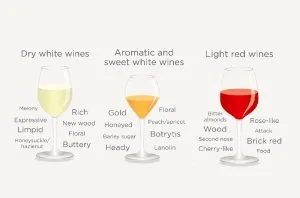Do you ever find it difficult to read wine tasting notes?
Wine tasting will always have a subjective, personal quality, because taste and smell are so inextricably bound to an individual’s own reference points. Language, too, is both collective and individual, and you may identify more with one wine critic over another.
But, there are some common wine descriptive words that it is useful to know, and can help you understand what to expect from a style of wine.
As well as flavours, tasting notes can tell you about other aspects of the wine. Andrew Jefford wrote in his guide to writing wine tasting notes ‘a wine’s structure, shape and texture are just as interesting as its aroma and flavour.’
‘[Texture] is what really separates the great from the merely good,’ said Berkmann Wine Cellars purchasing director Alex Hunt MW, in Victoria Moore’s guide to wine tasting.
Wine tasting notes: how much is too much?
There has been debate about the use of overly descriptive tasting notes in the wine world, as Andrew Jefford discussed in his 2015 column.
‘Each contender is trying to outdo the other, and bludgeon their rivals to death by adjectival force of arms.’
But at the same time, overly bland notes do not communicate anything.
‘Conservative, restrained wine descriptions are tedious, repetitive and soporific, and utterly fail to evoke the excitement of smelling and tasting wine,’ wrote Jefford.
When writing tasting notes, Jefford advises to keep use analogical descriptors in moderation – half a dozen






